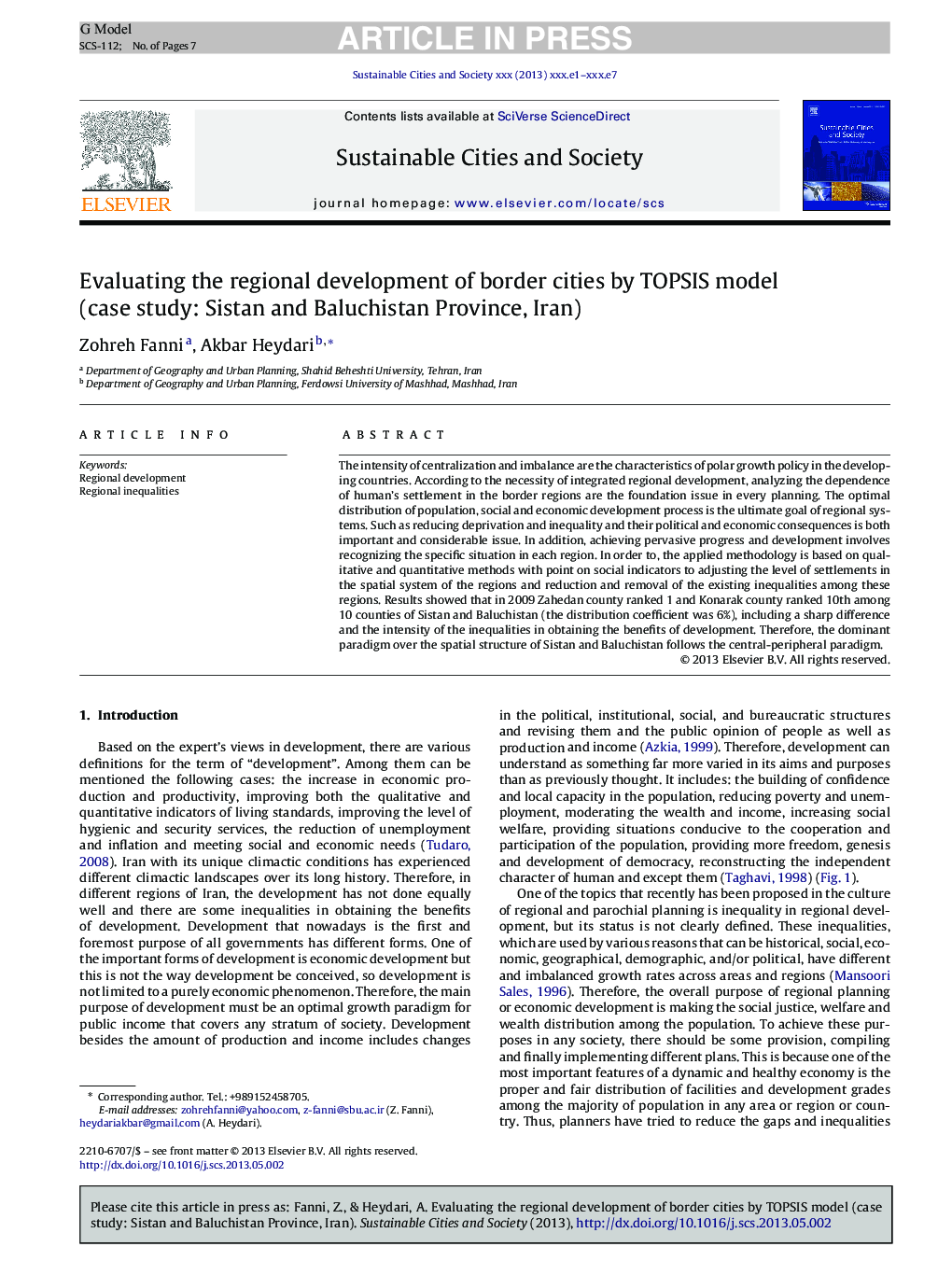| Article ID | Journal | Published Year | Pages | File Type |
|---|---|---|---|---|
| 6776692 | Sustainable Cities and Society | 2014 | 7 Pages |
Abstract
The intensity of centralization and imbalance are the characteristics of polar growth policy in the developing countries. According to the necessity of integrated regional development, analyzing the dependence of human's settlement in the border regions are the foundation issue in every planning. The optimal distribution of population, social and economic development process is the ultimate goal of regional systems. Such as reducing deprivation and inequality and their political and economic consequences is both important and considerable issue. In addition, achieving pervasive progress and development involves recognizing the specific situation in each region. In order to, the applied methodology is based on qualitative and quantitative methods with point on social indicators to adjusting the level of settlements in the spatial system of the regions and reduction and removal of the existing inequalities among these regions. Results showed that in 2009 Zahedan county ranked 1 and Konarak county ranked 10th among 10 counties of Sistan and Baluchistan (the distribution coefficient was 6%), including a sharp difference and the intensity of the inequalities in obtaining the benefits of development. Therefore, the dominant paradigm over the spatial structure of Sistan and Baluchistan follows the central-peripheral paradigm.
Related Topics
Physical Sciences and Engineering
Energy
Renewable Energy, Sustainability and the Environment
Authors
Zohreh Fanni, Barat Ali Khakpour, Akbar Heydari,
